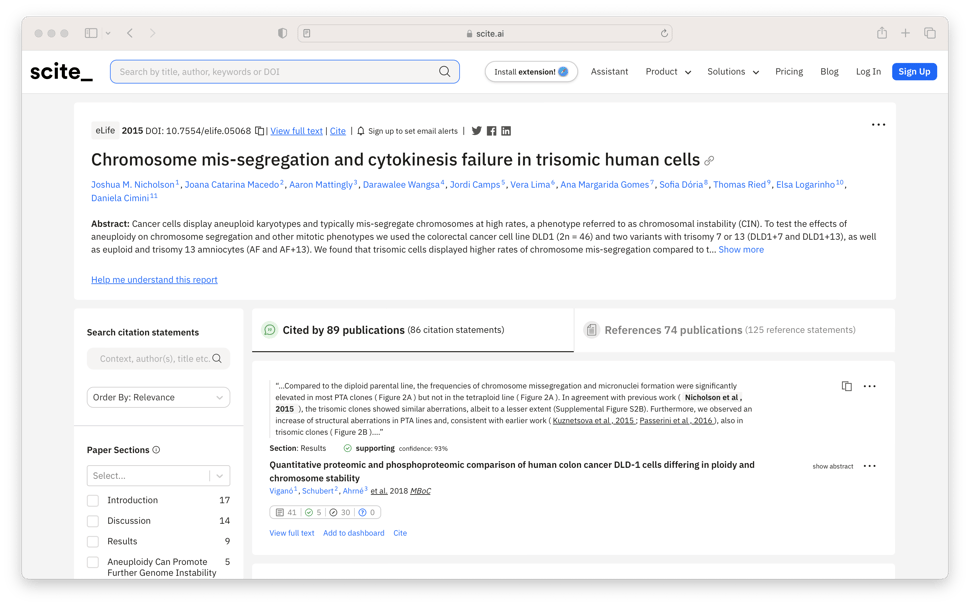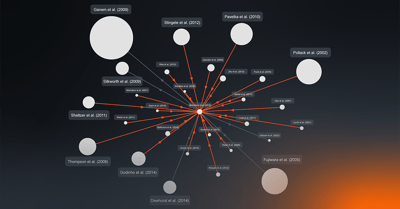The Internet, life-saving vaccines, space telescopes, pasteurization, gene-editing, and the smartphone in your pocket — these breakthroughs were all made possible by scientific research.
While research is amazing, we are confronted with two main challenges: how do we deal with so much new research (information overload) and how do we know what to trust?
Addressing Information Overload & Trust in Research
The term information overload has been discussed since the 1960s, with researchers saying they are “drowning in new research.” If researchers were drowning then, they are surely drowning now as the number of papers published in the sixties against the volume published now, is like a puddle versus an ocean.
Indeed, in the biomedical field alone, more than 1 million papers pour into the PubMed database each year — about two papers per minute.
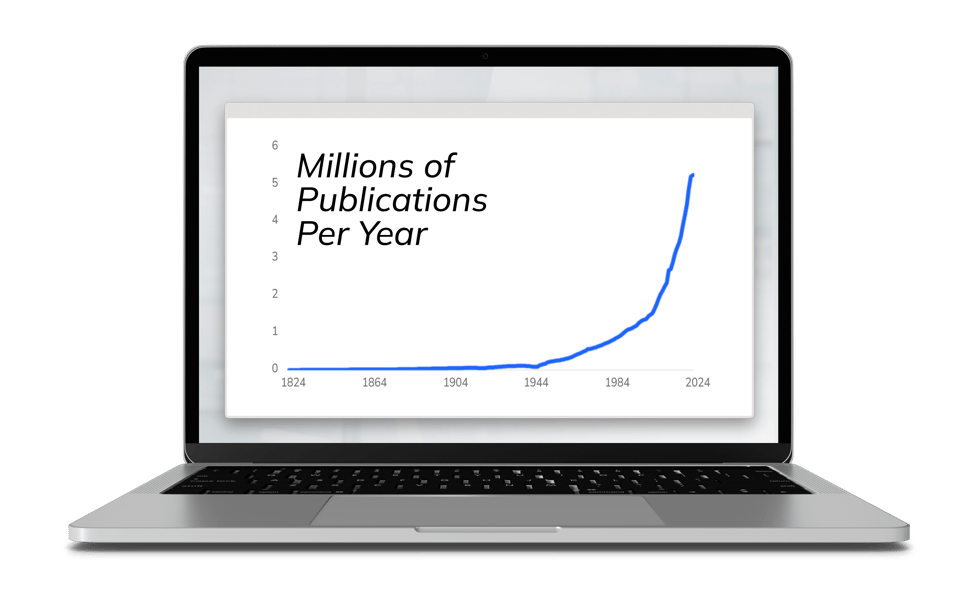 Exponential Growth of Scientific Research Articles Over the Last 200 Years
Exponential Growth of Scientific Research Articles Over the Last 200 Years
So, how do we keep up with this avalanche of amazing research? And, as we do so, how do we know what to trust?
Historically, we have looked at various metrics to evaluate research. These metrics, like publishing in the journals with high Impact Factors, having a highly cited paper, and a high Altmetric score have pushed research community to focus on impactful studies. Yet these same incentives can unintentionally lead researchers to cut corners. There have been studies across various disciplines, such as cancer research or psychology, that look at the reproducibility of claims in papers, and some pretty major problems were identified. So much so that the New York Times documented the findings as a “replicability crisis.”
Clearly, it’s critical to know that a paper you're going to develop a drug off of is trustworthy, or that what you're citing is reliable.
scite, now part of the Research Solutions family, was built to address these specific concerns and to make research more reliable and more understandable through the development of Smart Citations.
Growing Complexity & The Current State of Citations
Research is becoming increasingly more interdisciplinary and, therefore, more complex. This makes it more difficult to keep up as you try to understand many concepts, themes, and even new acronyms related to your work.
This is why scite has introduced the next generation of citations called Smart Citations.
As an example, take a look at the paper below. This is actually the research paper of our very own Josh Nicholson.
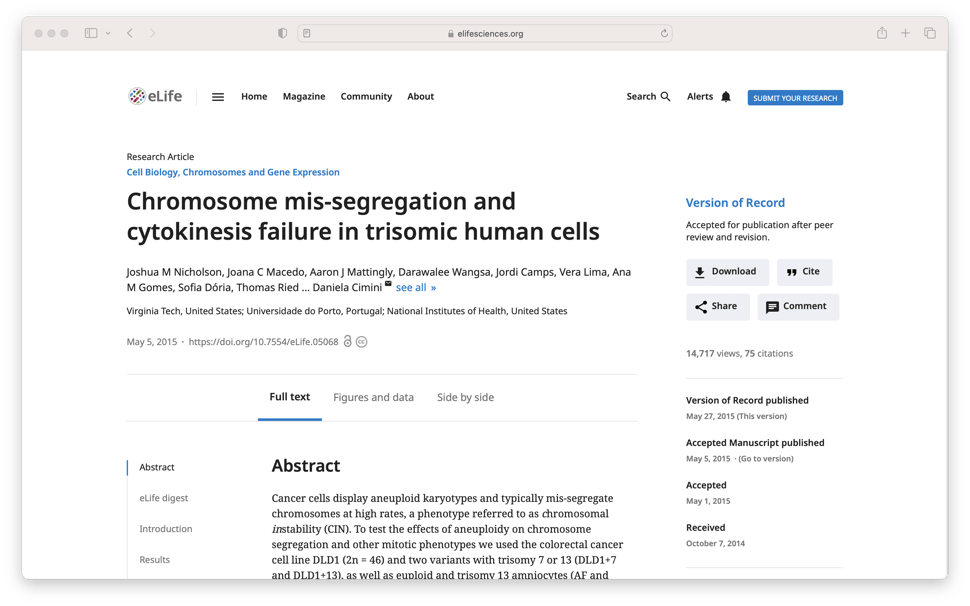
When you first look at a research paper, it's natural to look at a few things:
- Where is it published?
- Who are the authors?
- What are their affiliations?
Plus, some key metrics:
- How many times has it been cited?
- How many times has it been viewed?
- How many times has it been downloaded increasingly?
- How many times has it been shared on social media?
We use these things as heuristics, as proxies of quality to assess:
- Do we want to read this article?
- Do we want to buy this article?
- Do we want to cite this article?
Generally, all citation indices are going to show you something similar, and that’s a list of citing documents where you would be able to click through and see the number of citations.
However, it’s important to consider why these documents are citing this article of interest. Does this first one say Josh's study is absolute garbage? Does the second one say Josh's study is a miracle? You could certainly ascertain all that information, but no one has enough time to go through 66 different documents to see what each said and how they've cited the material.
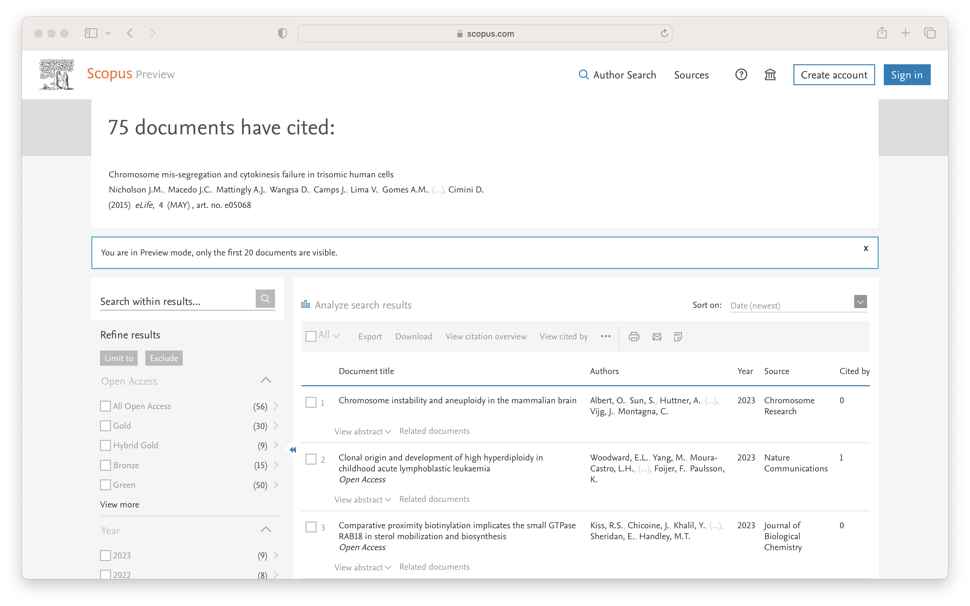
When using citations in this superficial way, where a high number is good and a low number is not so good, and citations are all flat and all treated the same, we're losing worthwhile information and insights. There are very valuable criticisms, discussions, interpretations out there directly connected via citations.
A richer context and a more nuanced view of research citation is necessary to stay ahead.
The Next Generation of Citations 🖖
Here is Josh’s article again.
Through scite, you can see similarities to a traditional citation index. It does show a list of citing articles, but we go further by going into the full text of the scholarly document and extracting out what we call “citation statements.”
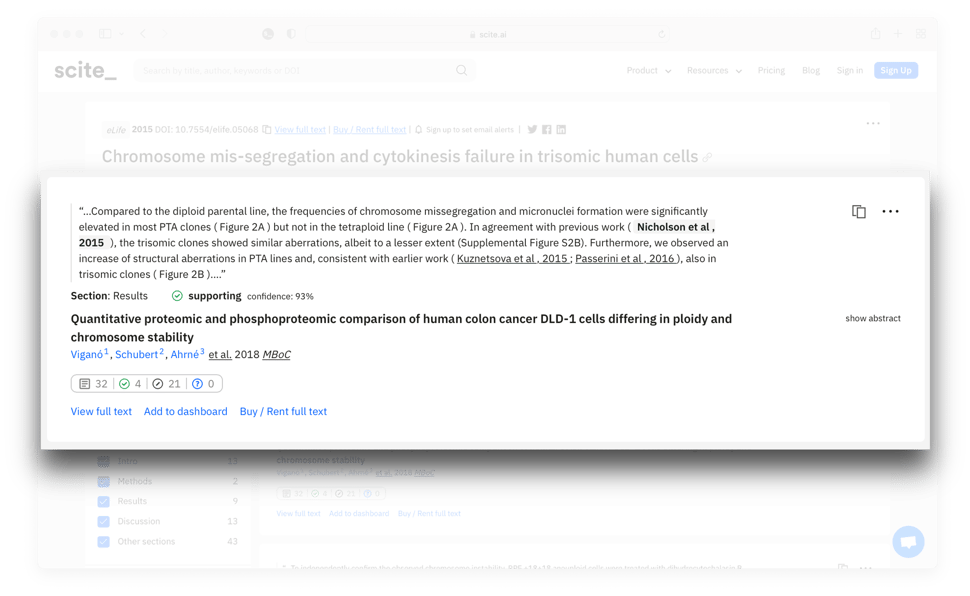
In a click, you're able to see that there's a paper published in MBoC citing Josh’s study. This excerpt of text was extracted from full text of the citing article in the Results section, and then has been classified by a deep learning model as presenting supporting evidence or analysis to the citing claim.
More trust is now established in these findings because you know they come from two independent groups.
This is what we call a Smart Citation, and they are the core building block of scite. Our Smart Citations are now live on more than 3 million articles from all different disciplines, and we’ve extracted 1.2 billion citation statements from both Open Access, as well as subscription-based articles through our indexing agreements with scholarly publishers.
Next-Generation Citations for Next-Generation Researchers
It’s important to acknowledge that all this important research and work done by the research community improves lives and has major societal impact. In an era where information overload threatens the integrity and efficiency of this research, it's vital to have tools that not only simplify our search for knowledge, but also elevate the trustworthiness of the information we rely upon.
Research Solutions' scite technology represents a significant leap forward in this endeavor, providing a nuanced, depth-oriented approach to understanding the impact and reliability of scholarly work. We encourage you to book a demo of Research Solutions’ scite technology today and experience firsthand how our solutions can transform the way you engage with academic and scientific literature, ensuring that you build on a foundation of verified, quality research.

